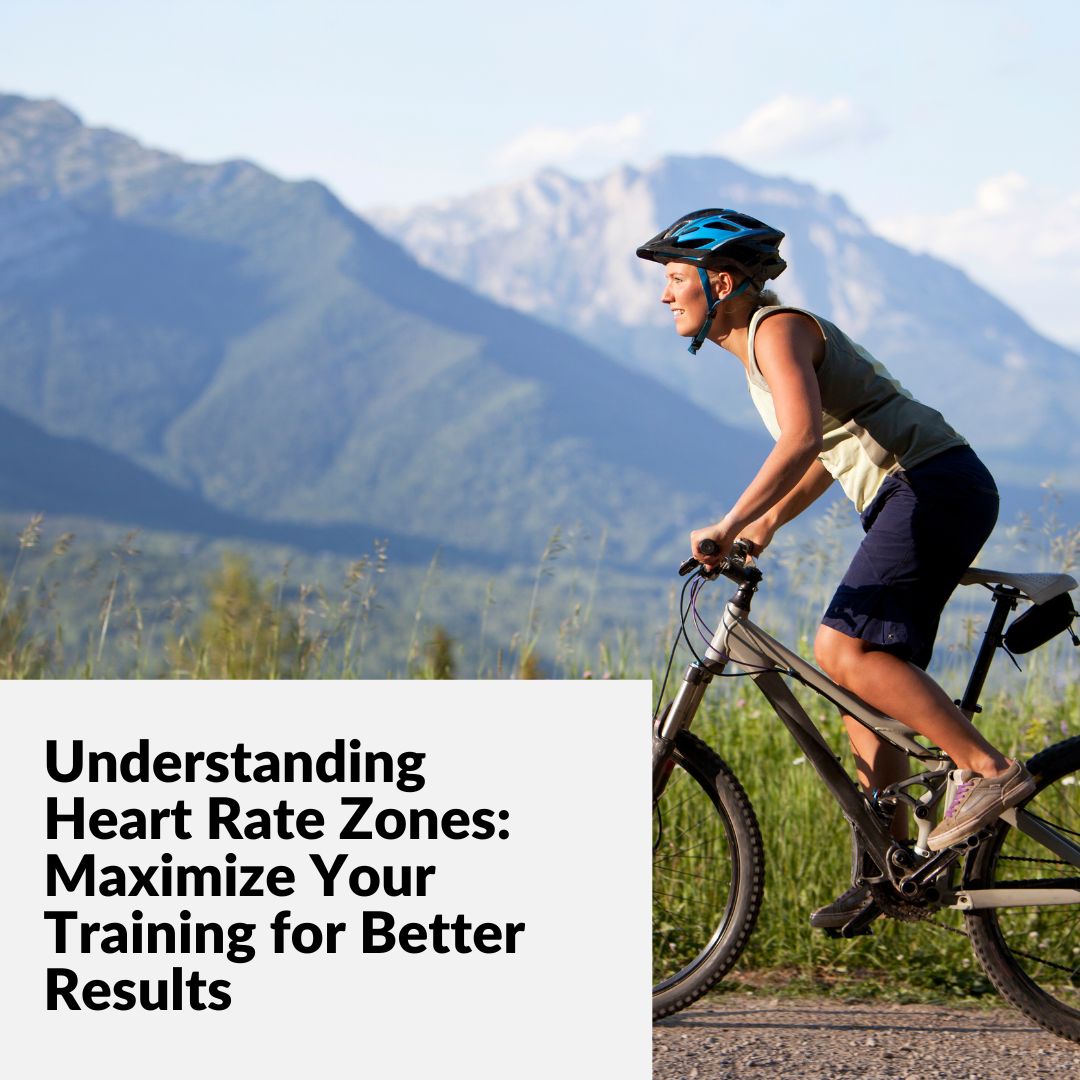
Training in the correct zone for your goals can improve your endurance, burn fat more efficiently, and avoid overtraining. Let’s break down what heart rate zones are, why they matter, and how to use them in your workouts.
Heart rate zones are ranges of beats per minute (BPM) that correspond to different levels of intensity during exercise. These zones are typically calculated as a percentage of your maximum heart rate (MHR). Knowing your heart rate zones allows you to customize your workouts to achieve specific fitness goals, whether it’s burning fat, building endurance, or increasing power.
To calculate your estimated maximum heart rate, use the formula 220 – your age = MHR. For example, if you’re 35, 220 – 35 = 185 BPM (your estimated maximum heart rate). If you’re experienced with endurance training your max heart rate is likely higher.
The 5 Heart Rate Zones Explained
Zone 1: The Warm-Up Zone (50-60% of MHR)
- BPM Range for a 35-Year-Old: 93-111 BPM
- Intensity: Very light
- Benefits:
- Improves circulation
- Aids recovery
- Ideal for warm-ups and cool-downs
In Zone 1, you should be able to hold a conversation easily. This zone is perfect for beginners or as a recovery session for more advanced athletes.
Zone 2: The Fat-Burning Zone (60-70% of MHR)
- BPM Range for a 35-Year-Old: 111-130 BPM
- Intensity: Light to moderate
- Benefits:
- Burns fat as a primary fuel source
- Builds aerobic endurance
Zone 2 is where you’ll see significant fat-burning benefits. It’s ideal for longer, steady-state cardio sessions like walking, cycling, or light jogging.
Zone 3: The Aerobic Zone (70-80% of MHR)
- BPM Range for a 35-Year-Old: 130-148 BPM
- Intensity: Moderate
- Benefits:
- Improves cardiovascular endurance
- Increases lung capacity
- Boosts overall stamina
In Zone 3, you’ll be breathing harder but still able to maintain a conversation in short sentences. This zone is key for building a solid fitness base.
Zone 4: The Anaerobic Threshold Zone (80-90% of MHR)
- BPM Range for a 35-Year-Old: 148-167 BPM
- Intensity: Hard
- Benefits:
- Improves speed and power
- Increases lactate threshold
- Enhances performance for high-intensity efforts
Zone 4 training pushes your limits. It’s ideal for interval training and shorter, high-intensity workouts. At this level, you’ll be breathing heavily and unable to speak more than a word or two at a time.
Zone 5: The Max Effort Zone (90-100% of MHR)
- BPM Range for a 35-Year-Old: 167-185 BPM
- Intensity: Very hard to maximum effort
- Benefits:
- Builds explosive power
- Increases peak performance capacity
- Burns the most calories in the shortest amount of time
Zone 5 is all-out effort. It’s typically used for short bursts of maximal intensity, like sprints or finishing a race strong. This zone is not sustainable for long periods and requires adequate recovery.
How to Monitor Your Heart Rate
To effectively train within your heart rate zones, you’ll need a way to monitor your heart rate during workouts. Here are a few options:
- Fitness Trackers & Smartwatches: Devices like Garmin, Fitbit, and Apple Watch provide real-time heart rate data.
- Chest Strap Monitors: More accurate than wrist-based monitors, chest straps are the gold standard for tracking heart rate.
- Manual Check: If technology isn’t your thing, you can manually check your pulse for 15 seconds and multiply by four to get your BPM.
How to Use Heart Rate Zones in Your Training
Different workouts will target different heart rate zones. Here’s how you can use these zones to structure your training:
- For Fat Loss: Spend more time in Zones 2 and 3. Aim for 30-60 minutes of steady-state cardio a few times a week.
- For Endurance: Focus on Zone 3 training to build your aerobic base and gradually increase your time spent in this zone.
- For Speed and Power: Incorporate Zone 4 and 5 intervals into your weekly routine. These high-intensity sessions should be shorter but more intense.
- For Recovery: Use Zone 1 for active recovery days to promote blood flow and reduce muscle soreness.
Why Heart Rate Training Matters
Heart rate training ensures that you’re working out at the right intensity to achieve your goals without overtraining or undertraining. It takes the guesswork out of your workouts and helps you maximize your time and effort.
By understanding and applying heart rate zones, you can create more effective and personalized training plans. Whether you’re a beginner or a seasoned athlete, heart rate training is a game-changer for improving your performance and achieving your fitness goals.
So, next time you hit the gym, check your heart rate and make sure you’re in the right zone to maximize your results. Your heart will thank you!
Leave a Comment
You must be logged in to post a comment.
0 Comments